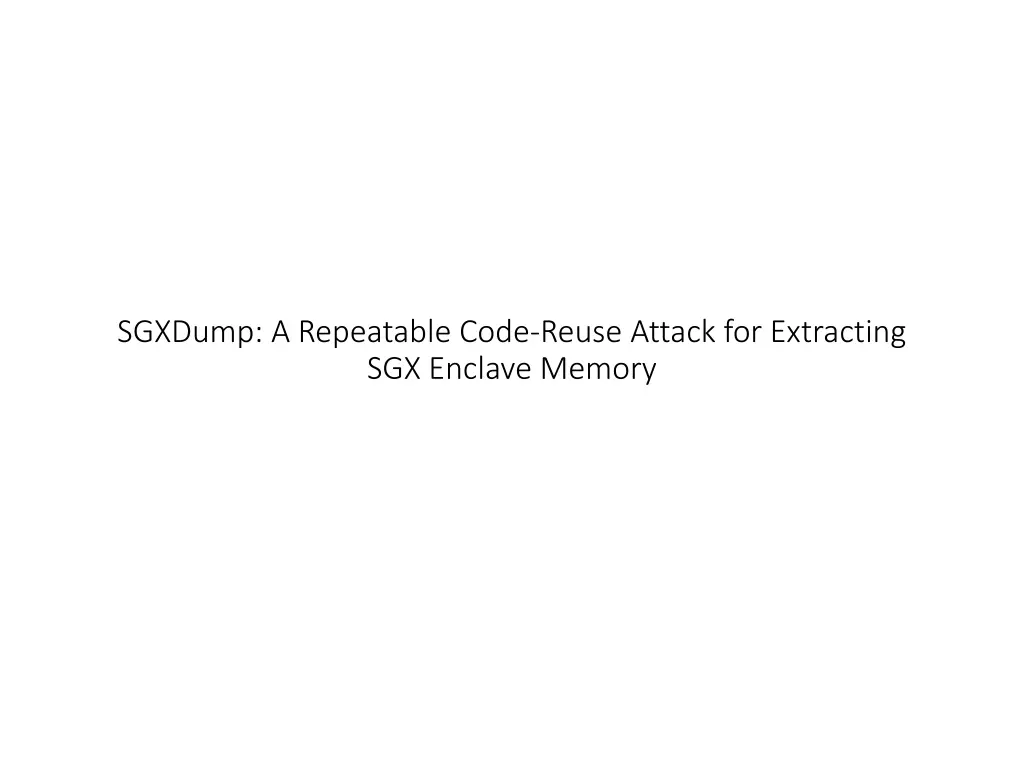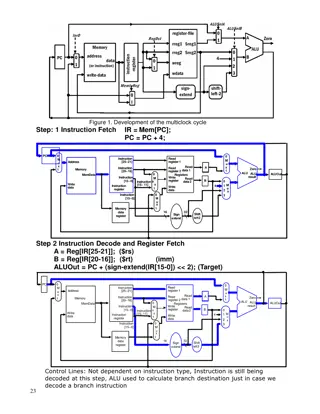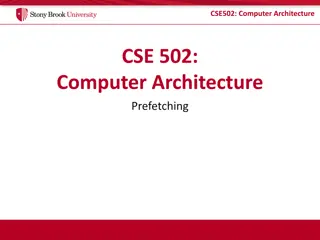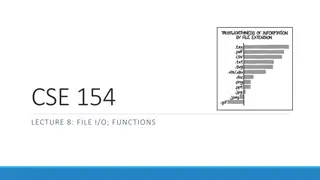
SGXDump: Repeatable Code Reuse Attack for Extracting SGX Enclave Memory
Explore SGXDump, a code-reuse attack designed to extract memory contents from SGX enclaves by exploiting vulnerabilities in the Intel SGX security solution. Learn about the threat model, attack design, and implementation details in this informative study.
Download Presentation

Please find below an Image/Link to download the presentation.
The content on the website is provided AS IS for your information and personal use only. It may not be sold, licensed, or shared on other websites without obtaining consent from the author. If you encounter any issues during the download, it is possible that the publisher has removed the file from their server.
You are allowed to download the files provided on this website for personal or commercial use, subject to the condition that they are used lawfully. All files are the property of their respective owners.
The content on the website is provided AS IS for your information and personal use only. It may not be sold, licensed, or shared on other websites without obtaining consent from the author.
E N D
Presentation Transcript
SGXDump: A Repeatable Code-Reuse Attack for Extracting SGX Enclave Memory
Contents Background Threat Model SGXDump Attack Overview Attack Design Implementation Conclusion
Background Intel s SGX Enclave ASLR Virtual Address Translation
Intels Software Guard Extensions set of instructions that allows a user process to create a secure area called an enclave inside its address space A hardware-based security solution to provide trusted computing environment.
Enclave ASLR Does NOT randomize the section address inside of the enclave In this study, attacker with root privilege can find the base address of the enclave binary at each execution Thus, All the addresses of the necessary ROP Gadgets can be calculated
Virtual Address Translation Virtual addresses need to be translated into physical addresses OS uses a per-process page table(array of page table entries) to manage its memory at the page level
Virtual Address Translation When an instruction accesses a page, its access page is set to 1 When an attacker has root privilege, this access bit can be used as a covert channel 1. Make a probe array(pa[]), which needs 256 consecutive pages for a page size of 4KB 2. Assume that process acquires 1 byte of secret information s then uses it to access pa[s*4096] - Attacker can obtain s by monitoring pa[] s access bit
Threat Model The primary goal of SGXDump is to extract the memory s entire contents, including any code and data in the target enclave by using the ROP payload assume that the target application running the enclave has a memory corruption vulnerability (e.g., a stack buffer overflow) suppose that the attacker can acquire root privilege, so has complete control of the OS
Threat Model Thus, we assume that the attacker can install a kernel module for checking the access bit of the victim process
SGXDump Attack Overview SGXDump Probe Array Monitor
SGXDump Turns enclave memory values into virtual page numbers in the accessed PTE(Page Table Entry) Reads one byte from enclave memory Binary-shifts the value to the left twelve times Multiplying 4096 to the value Adds base address of the probe array to the value Uses the value as index to access the probe array Sets access bit of PTE to 1
SGXDump The value that SGXDump read from the enclave memory can be recovered based on the index of the accessed probe array To obtain the entire contents, SGXDump iterates until it reaches the end of the memory
Probe Array Monitoring Detect a change in a PTE Recover the value by locating the accessed page number in the PTE Clears the access bit in the PTE and continues To leak data correctly, uses semaphore
Probe Array Monitoring Sync Four-byte memory in target application s stack Uses zero to indicate SGXDump to read next byte Uses starting address of a waiting loop in SGXDump
Attack Design Choosing the Probe Array Conditions of Memory area for Probe Array Mapped Memory area No access by other threads Memory area outside of the Enclave
Attack Design Choosing the Probe Array Finding the satisfying area Analyze memory mapping information of the target process /proc/pid/maps
Attack Design Choosing the Probe Array
Attack Design Choosing the Probe Array Finding the satisfying area Analyze memory mapping information of the target process /proc/pid/maps Check if a thread uses the possible memory area
Attack Design Identifying the Enclave s Base Address Intel s SGX does NOT allow dynamic linking Need a customized ROP payload for each target enclave Only Enclave base address is random in ASLR environment ROP Payload can be constructed correctly with base address
Attack Design SGXDump ROP Payload Structure
Attack Design Synchronization and Data Leak via PAM
Implementation Evaluation
Conclusion If memory vulnerability is found on A SGX Application Enclave memory can be leaked easily Presented ROP attack to retrieve the enclave s entire memory Does NOT leave any system logs making the attack more stealthy






















